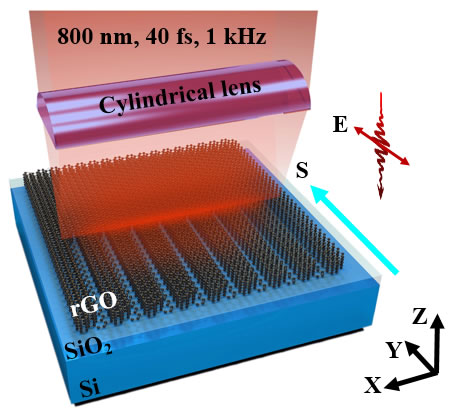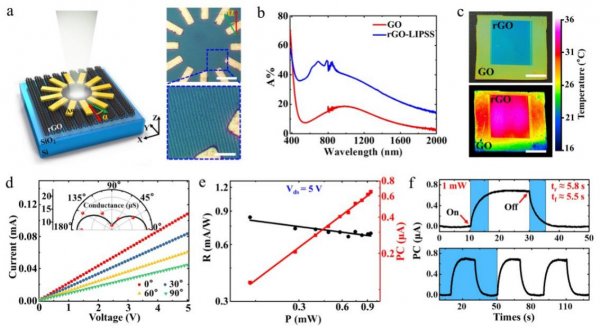Since the first discovery of graphene, "two-dimensional materials" have gradually entered people's field of vision and become a research hotspot in the field of materials. However, how to break through the performance of the material itself and expand its physical and chemical properties is the key link to achieve its application. Through self-assembly, electron beam etching and extreme ultraviolet lithography techniques to prepare micro-nano structures on graphene, it can adjust its band gap, absorption, carrier mobility and other properties. However, these methods have the problems of time-consuming, high cost and lack of versatility. Therefore, how to reduce costs and efficiently prepare micro-nano structure graphene has become an important issue that needs to be solved at present.
Femtosecond laser processing technology is widely used in the field of ultra-fine micro-nano processing of various materials with its unique advantages of ultra-high peak power and ultra-short pulse duration. However, taking laser direct writing as an example, although its precision is very high, the efficiency of ultra-fine micro-nano preparation still needs to be improved. At the same time, ensuring processing accuracy and processing efficiency is one of the main problems that the technology needs to solve. Obviously, how to use flexible and simple processing methods to solve the problems of processing accuracy and processing efficiency is the key to expand the practicality of femtosecond lasers.
In response to the above problems, the Yang Jianjun team of the Photonic Laboratory of the Changchun Institute of Optics, Fine Mechanics and Physics, the Chinese Academy of Sciences, and Changzhi College in Shanxi and the University of Rochester in the United States have proposed a new type of response-femtosecond laser plasma lithography (FPL) . By widening the field of view irradiation to homogenize the incident laser flux and regulating the coupling intensity of the laser and the substance and the instantaneous local free electron density distribution, the collaborators achieved high quality on the surface of the 100-nanometer thick silicon-based graphene oxide (GO) film Rapid preparation of micro-nano periodic structures.
This work demonstrates for the first time that FPL technology can realize the rapid preparation of large-area high-quality submicron periodic structures (period about 680 nm and width about 400 nm) (rGO-LIPSS) on two-dimensional thin film materials. Not only that, thanks to the nonlinear optical characteristics of the femtosecond laser, the FPL technology processing process is not easily affected by factors such as surface defects and impurities, and the processing substrate is also not easily limited by the type of material. The processed materials exhibit excellent mechanical properties and can be transferred intact using traditional wet transfer methods. This laid the foundation for the flexible preparation of periodic micro-nano structures of related materials.
The research results were published in "Light: Science & Applications" under the title of High-speed femtosecond laser plasmonic lithography and reduction of graphene oxide for anisotropic photoresponse.

Figure 1 Micro-nano processing of GO film surface based on femtosecond laser plasma lithography (FPL)

Figure 2 Flexible preparation of rGO-LIPSS based on FPL technology

Figure 3 Research on the characteristics of photoelectric response devices based on rGO-LIPSS
Single Sofa Chair,Single Sofa Bed,Single Sofa Modern,Single Sofa Set
FOSHAN CITY LESHUN RONGHUI FURNITURE CO.LTD , https://www.sdwinfurniture.com